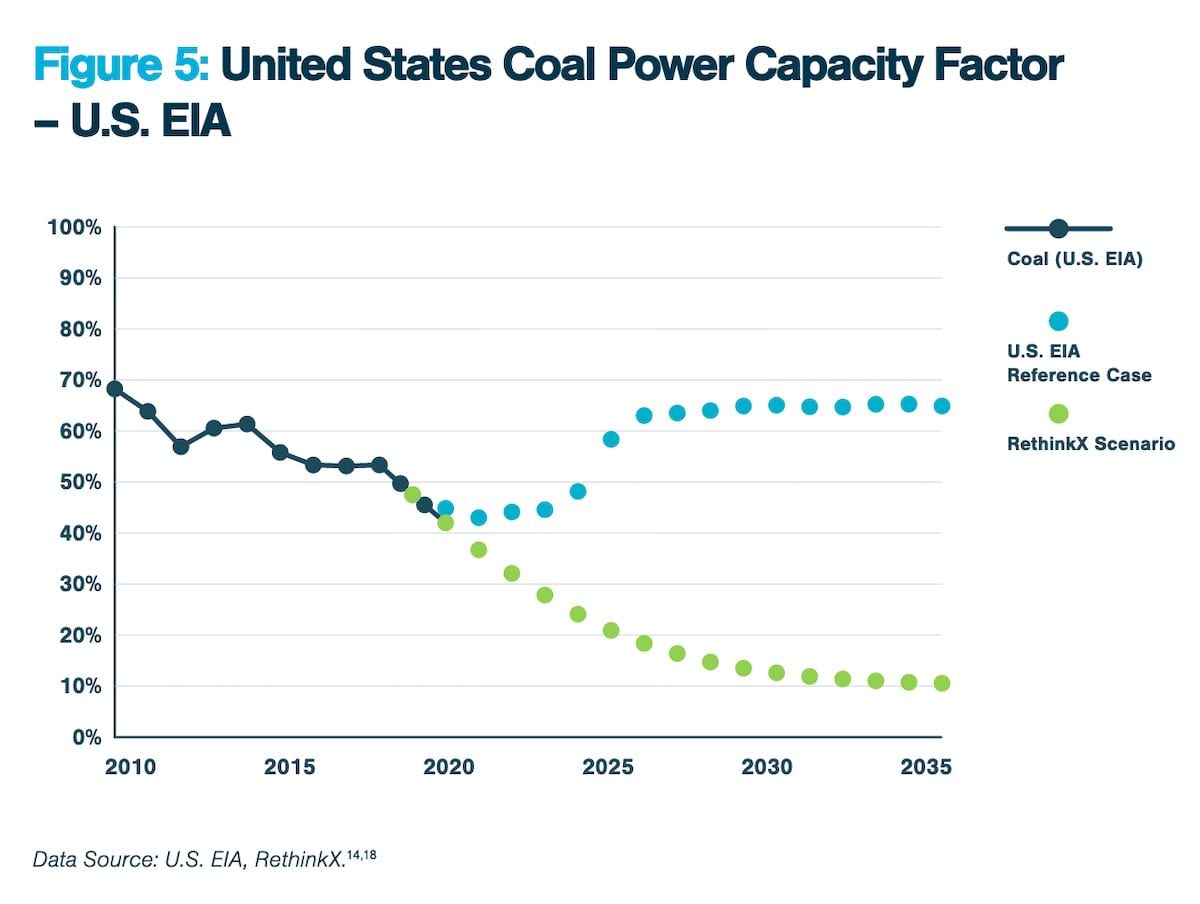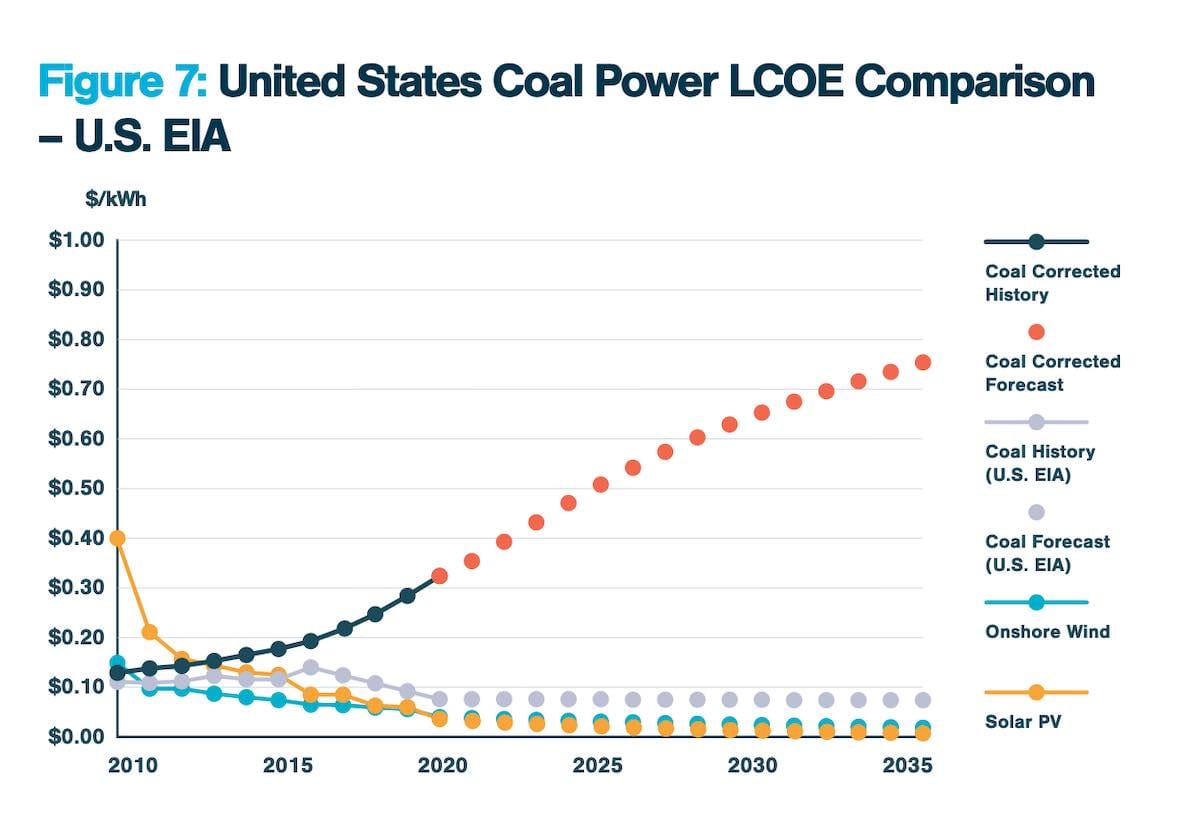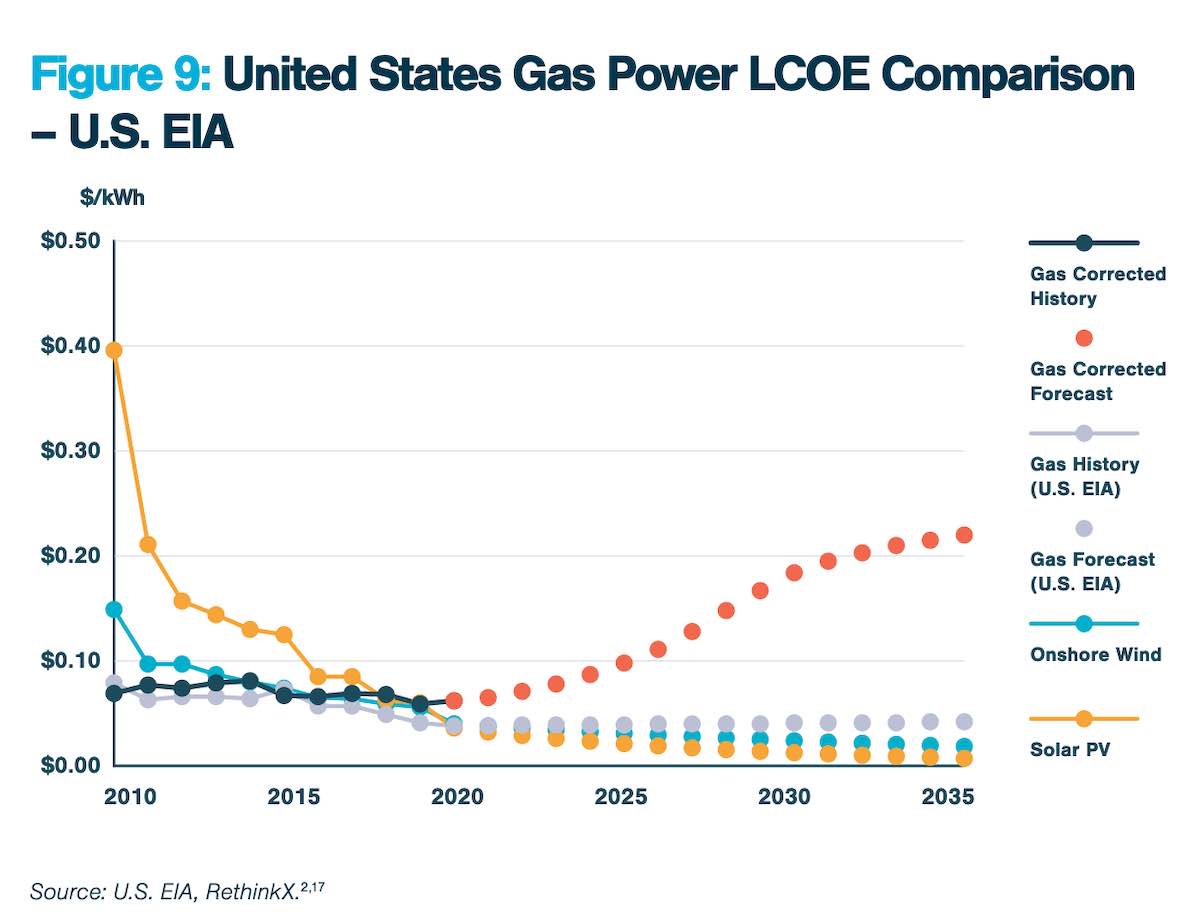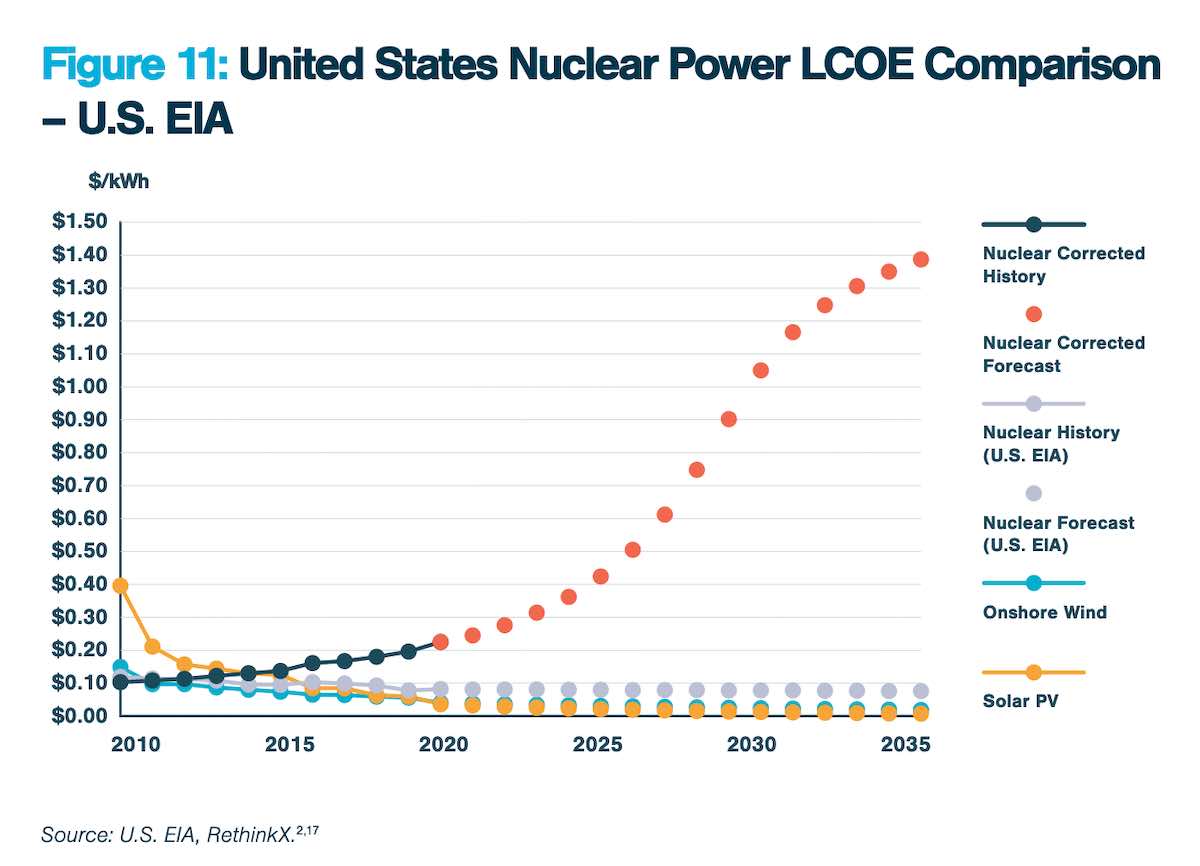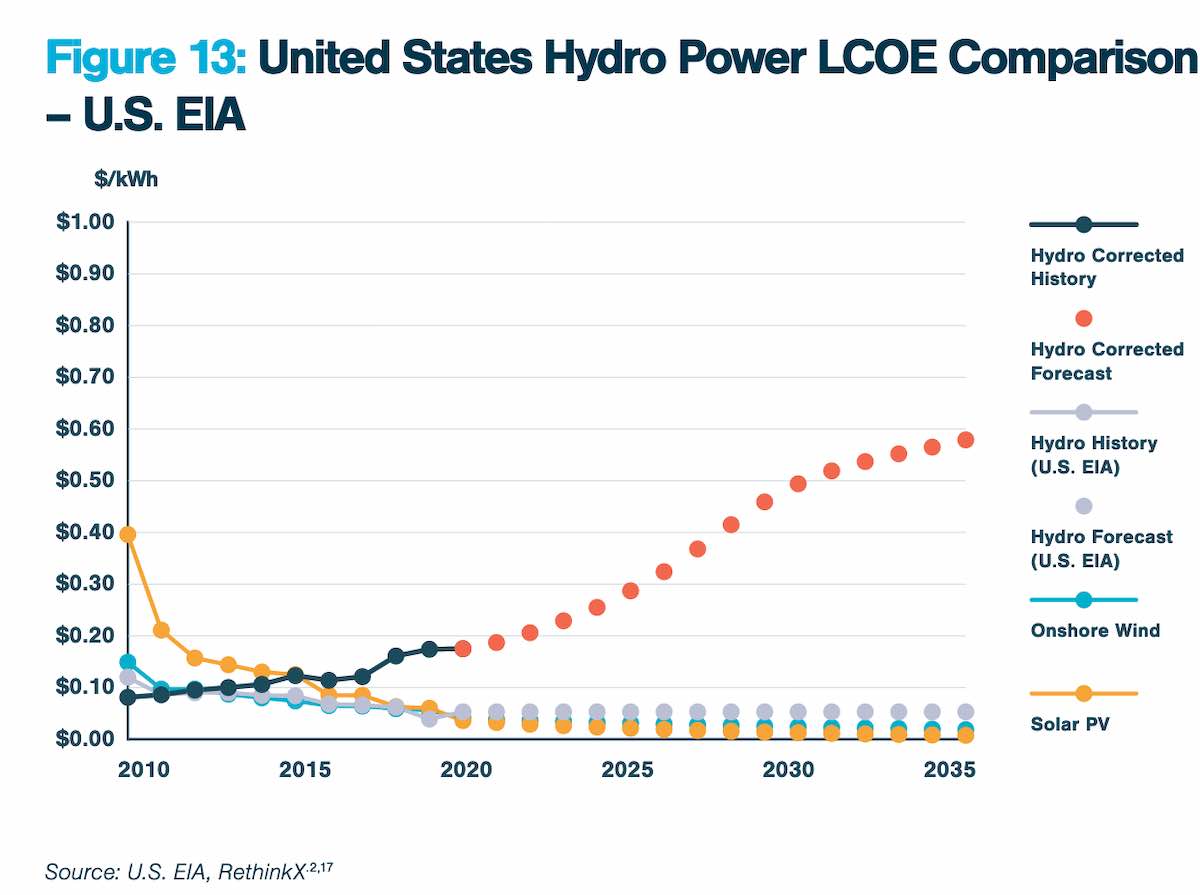A major new report has warned that conventional energy assets including coal, gas, nuclear and hydro power plants have been consistently and “severely” over-valued, creating a massive bubble that could exceed $US1 trillion by 2030.
The report is the latest from Rethinx, an independent think-tank that was co-founded by Stanford University futurist Tony Seba, who is regarded as one of few global analysts to correctly forecast the plunging cost of solar over the last decade.
According to the new report, co-authored by Rethinx research fellow Adam Dorr, analysts and the broader market are still getting energy valuation badly wrong, not just on the falling costs of solar, wind and batteries, or “SWB,” but on the true value, or levelised cost of energy, of conventional energy assets.
“Since 2010, conventional LCOE analyses have consistently overestimated future cash flows from coal, gas, nuclear, and hydro power assets by ignoring the impacts of SWB disruption and assuming a high and constant capacity factor,” the report says.
Where the analysts are going wrong, according to Seba and co, is in their assumptions that conventional energy plants will be able to successfully sell the same quantity of electricity each year from today through to 2040 and beyond.
This assumption, says the report, has been false for at least 10 years. Rather, the productivity of conventional power plants will continue to decrease as competitive pressure from near-zero marginal cost solar PV, onshore wind, and battery storage continue to grow exponentially worldwide.
“Mainstream LCOE analyses thus artificially understate the cost of electricity of prospective coal, gas, nuclear, and hydro power plants based on false assumptions about their potential to continue selling a fixed and high percentage of their electricity output in the decades ahead,” the report says.
“In doing so, they have inflated the value of those cash flows and reported far lower LCOE than is actually justified … and helped create a bubble in conventional energy assets worldwide that could exceed $1 trillion by 2030.”
A core part of the problem, the authors note, lies in the consistent under-estimation of the failing costs of new energy technologies, alongside the under-estimation of the rate at which increasingly cheap and clever new technologies will make conventional energy generation assets redundant.
This has been particularly notable in the case of solar PV, although according to the report, the rate at which solar has become competitive with conventional energy sources is still broadly underestimated.
Seba and his team have recalculated LCOE accounting for a dynamic rather than static capacity factor, and found that solar PV reached price parity with coal in 2013 rather than 2016, in 2018 rather than 2020 for gas, in 2014 rather than 2016 for nuclear, and 2015 rather than 2020 for hydro power.
Looking forward, the report warns that the cost gap between “SWB” and conventional power plants is widening much more rapidly than mainstream analysts are projecting. Rethinx last year argued that SWB costs would fall a further 70% over the next 10 years as global deployment continued to expand exponentially.
“Coal, gas, nuclear, and hydro power are no longer competitive with the combination of SWB, even using inaccurate mainstream LCOE calculations,” the report says.
“Fossil fuel power plants will inevitably be disrupted both from below, by utility-scale SWB generation, and from the edge, by distributed SWB generation, while simultaneously having to compete with legacy nuclear power plants propped up by regulators and existing hydro power plants with low marginal costs.
“This means that SWB will continue to capture an increasing market share of power generation over the next decade, while conventional coal, gas, nuclear, and hydro power plants will compete among each other for a dwindling share of the market.”
Meanwhile, the report estimates that the consistent overvaluation of fossil fuel and hydro-power assets many have already led governments and asset managers to make hundreds of billions of dollars in investments they might not have otherwise made.
And it warns that unless society makes immediate adjustments and starts valuing conventional energy assets using dynamic rather than static cost models, the mis-allocation of billions or even trillions of dollars worldwide will continue, forming an increasingly dangerous economic bubble.
“Continued over-investment in an asset class beyond what the fundamental value can possibly return is the very definition of a financial bubble,” the report says.
“The bursting of this bubble could have serious consequences across the global economy that will only increase the longer the market delays making a correction.”

